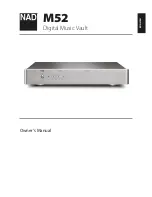
Configuration Basics
16-2
Using the LI-6400
16
In the early days of the LI-6400, there was but one way to do any configura-
tion change: go to the Config Editor. While this tool is still available as a last
resort, more recent versions of software have introduced various configura-
tion ÒhelpersÓ, such as Logging Control (page 9-7), Prompt Control (page
9-12), and Light Source Control (page 8-4).
The purpose of this chapter is to explain OPENÕs configuration scheme, and
how the various configuration helpers fit into it. We also describe another
helper, the Installation Menu. It has itÕs own guided tour in an earlier chapter
(see page 3-51), but we give the details here. Finally, we document the gen-
eral purpose configuration tool, the Config Editor.
A Definition of Terms
Configuring OPEN for making the measurements that you want covers a va-
riety of issues, including the proper calibration constants for the sensors being
used, the mix of variables you want stored, and the particular equation set that
you deem appropriate, to name but three. All of these are handled by one ve-
hicle: the configuration file.
Configuration Files
When OPEN is first run, one of the things that happens is the selection and
implementation of a
configuration file
. This may happen automatically, or
may involve user assistance. If multiple configuration files exist, the user is
asked to select one from a menu (Figure 16-1). The default configuration file
is named
Factory Default
, and if that is the only one found, it is used without first
prompting the user to select it.
So what, then, is a Configuration File? It is simply a collection of configura-
tion commands that specify changes to the default settings. While there are
about 30 possible configuration commands, usually only a few are found in a
configuration file.
Summary of Contents for LI-6400
Page 1: ...Using the LI 6400 Portable Photosynthesis System ...
Page 15: ...Part I The Basics ...
Page 16: ......
Page 174: ...Making Measurements Answers to Questions 4 56 Using the LI 6400 4 ...
Page 175: ...Part II Useful Details ...
Page 176: ......
Page 200: ...Standard Tools Power ON Hooks 5 24 Using the LI 6400 5 ...
Page 214: ...Real Time Data Real Time Graphics 6 14 Using the LI 6400 6 ...
Page 234: ...Environmental Control Light Control 7 20 Using the LI 6400 7 ...
Page 244: ...Light Sensor Considerations Gallium Arsenide Phosphide GaAsP Sensor 8 10 Using the LI 6400 8 ...
Page 288: ...Data Logging Making Your Own AutoPrograms 9 44 Using the LI 6400 9 ...
Page 289: ...Part III Working With Files ...
Page 290: ......
Page 312: ...The LPL File System Troubleshooting 10 22 Using the LI 6400 10 ...
Page 340: ...Downloading Files Using a Data Capture Program 11 28 Using the LI 6400 11 ...
Page 375: ...Part IV Configuration Issues ...
Page 376: ......
Page 420: ...Defining User Variables Old Style vs New Style 15 18 Using the LI 6400 15 ...
Page 454: ...Using an Energy Balance Further Reading 17 12 Using the LI 6400 17 ...
Page 455: ...Part V Maintenance Troubleshooting ...
Page 456: ......
Page 572: ...Troubleshooting Useful Information 20 46 Using the LI 6400 20 ...
Page 593: ...Part VI Programming ...
Page 594: ......
Page 622: ...Programming with LPL Compiler Directives 22 28 Using the LI 6400 22 ...
Page 846: ...Index I 16 Using the LI 6400 ...
















































